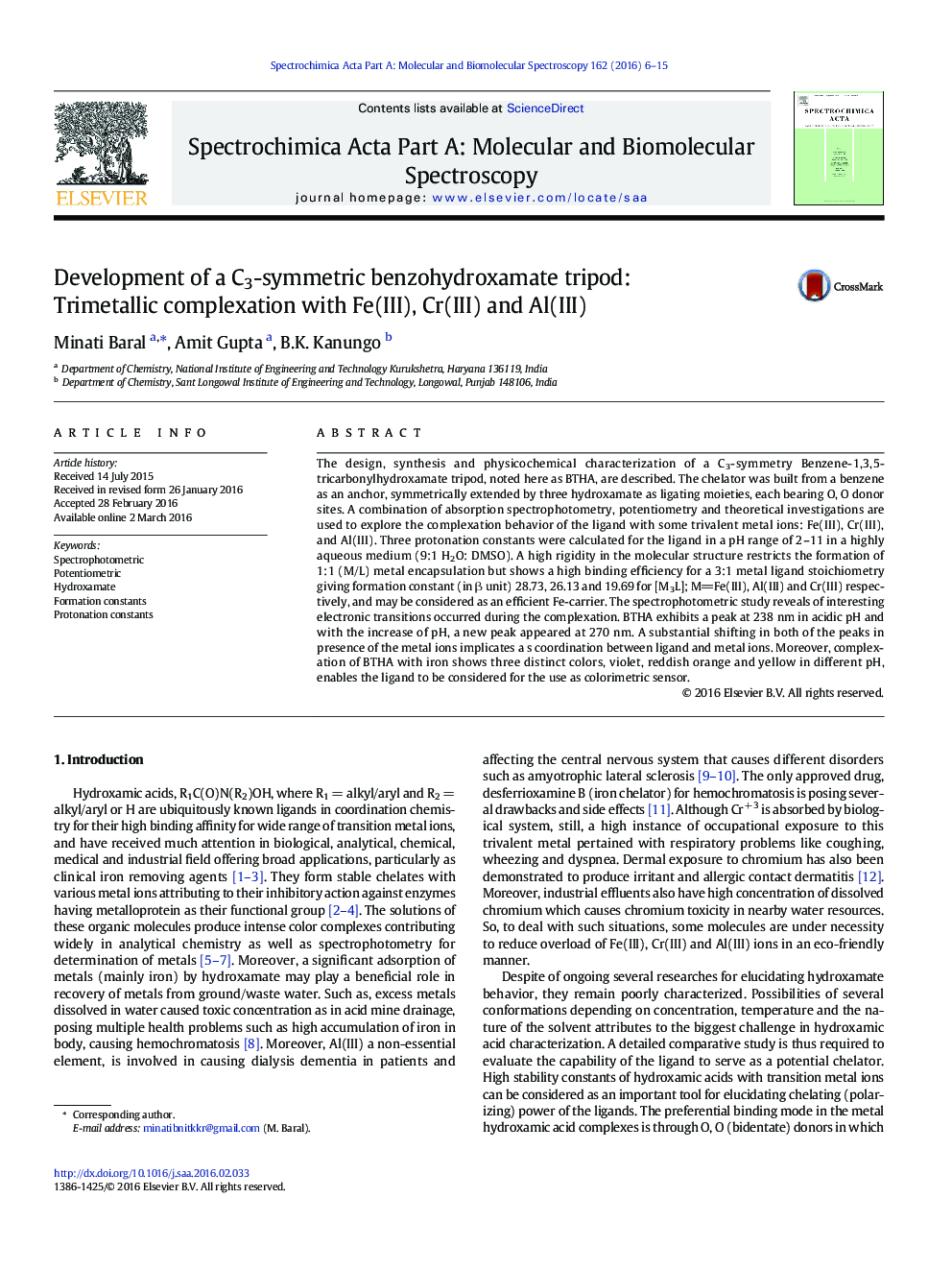| کد مقاله | کد نشریه | سال انتشار | مقاله انگلیسی | نسخه تمام متن |
|---|---|---|---|---|
| 1231070 | 1495207 | 2016 | 10 صفحه PDF | دانلود رایگان |

• A tri substituted hydroxamate tripodal ligand developed, forms thermodynamically stable complexes with trivalent metal ions.
• The ligand with short arms of hydroxamic acid renders restriction for a 1:1 ligand- metal encapsulation.
• Preferentially the ligand forms trimetallic complex of the type [L(M(H2O)4)3].
• Fe(III)-L exhibits three distinct colors at different pH implying its use as colorimetric sensor.
• The theoretical investigations confirm the experimental findings.
The design, synthesis and physicochemical characterization of a C3-symmetry Benzene-1,3,5-tricarbonylhydroxamate tripod, noted here as BTHA, are described. The chelator was built from a benzene as an anchor, symmetrically extended by three hydroxamate as ligating moieties, each bearing O, O donor sites. A combination of absorption spectrophotometry, potentiometry and theoretical investigations are used to explore the complexation behavior of the ligand with some trivalent metal ions: Fe(III), Cr(III), and Al(III). Three protonation constants were calculated for the ligand in a pH range of 2–11 in a highly aqueous medium (9:1 H2O: DMSO). A high rigidity in the molecular structure restricts the formation of 1:1 (M/L) metal encapsulation but shows a high binding efficiency for a 3:1 metal ligand stoichiometry giving formation constant (in β unit) 28.73, 26.13 and 19.69 for [M3L]; MFe(III), Al(III) and Cr(III) respectively, and may be considered as an efficient Fe-carrier. The spectrophotometric study reveals of interesting electronic transitions occurred during the complexation. BTHA exhibits a peak at 238 nm in acidic pH and with the increase of pH, a new peak appeared at 270 nm. A substantial shifting in both of the peaks in presence of the metal ions implicates a s coordination between ligand and metal ions. Moreover, complexation of BTHA with iron shows three distinct colors, violet, reddish orange and yellow in different pH, enables the ligand to be considered for the use as colorimetric sensor.
Figure optionsDownload as PowerPoint slide
Journal: Spectrochimica Acta Part A: Molecular and Biomolecular Spectroscopy - Volume 162, 5 June 2016, Pages 6–15